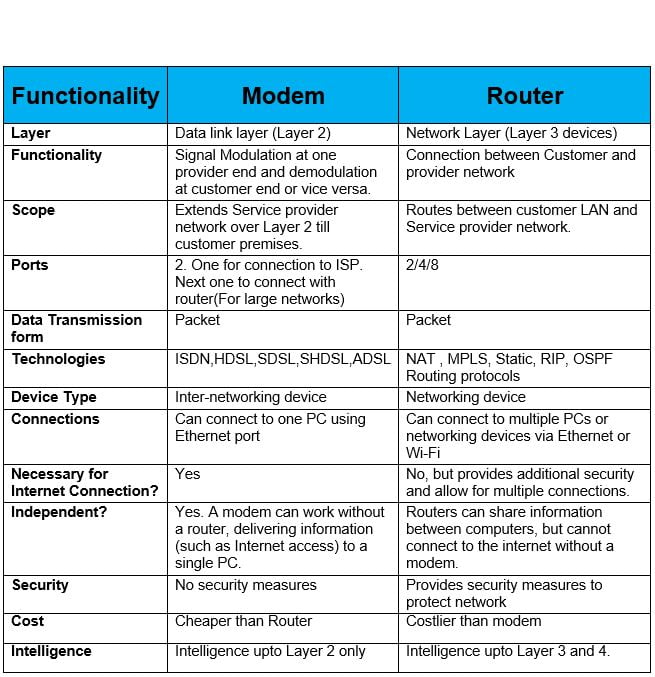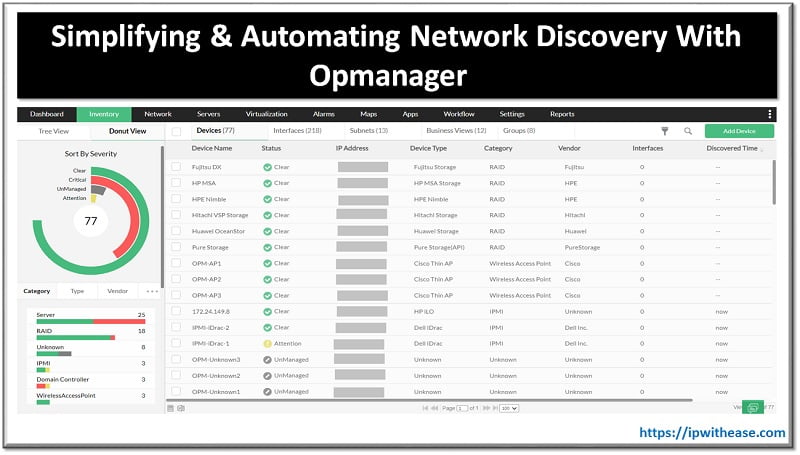A Router is a device which acts as an interface between two networks ie LAN and WAN. It forwards packets based on network addresses (Internet Protocol addresses) between ISP’s router and LAN. A router learns more about the networks to which it is connected and can be more selective about the packets it passes on. A router rejects packets unless they match defined attributes (eg specific source or destination network addresses). A router can also select the best route for packets to take in large interconnected networks. It will have several Ethernet ports to which one device per port is attached. For instance, in a home network, various desktop computers, laptops, printers and scanners may be connected through an Ethernet cable to the router. The computers can connect to printers and other devices on the network and infact share each other data .
A Modem is a device that transmits and receives data over the plain old telephone system’s (POTS) analogue lines. The modem acts as a “bridge” between customer PC and your ISP. The dynamic or static public IP address which the modem obtains from ISP is passed on to your PC. Modems generally work in pairs, with one modem at provider end and other at customer premises end. The functionality of modems is to modulate and then demodulate the signal and so that they are received at the each side of the connection. Some examples of modems include – Cable Modem, ADSL Modem , HDSL Modem etc.A modem (modulator/demodulator) was originally a device that took the analog signal of the phone line and converted it into a digital signal that a computer can understand. Now we use the term “modem” to mean any device that receives the raw signal from an Internet service provider and puts out a signal the computer and other devices can use.
ABOUT THE AUTHOR

I am here to share my knowledge and experience in the field of networking with the goal being – “The more you share, the more you learn.”
I am a biotechnologist by qualification and a Network Enthusiast by interest. I developed interest in networking being in the company of a passionate Network Professional, my husband.
I am a strong believer of the fact that “learning is a constant process of discovering yourself.”
– Rashmi Bhardwaj (Author/Editor)




